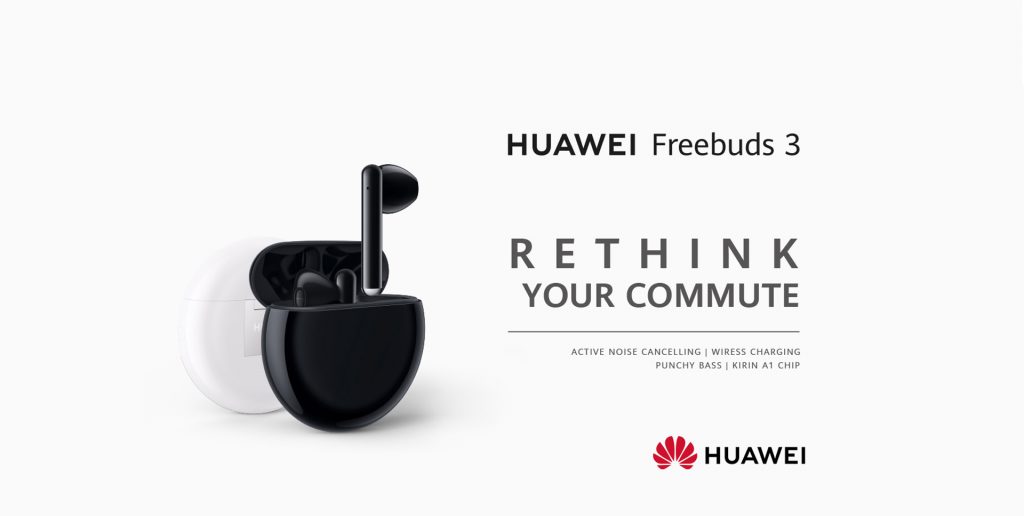-
Design
-
Functionality
-
Performance
-
Price
Summary
The CRISP. bits
- Very fast charging
- Good vocal clarity
- Available in Black
Not so CRISP.
- Poor noise isolation
- ANC barely noticeable
- Only 4 hours battery life
- Would have liked Silicon for a tighter fit
The Freebuds 3 are the latest adaptation of wireless earphones from mobile giants Huawei. Featuring ANC or ‘Active Noise Cancellation’, Huawei is looking to make a mark and disrupt the audio accessory market.
Design
Let’s get the glaring obvious out the way first, yes the FreeBuds 3 strike a major resemblance to the Airpod 2, they even come in a similar (but better) circular charge/carry case. There was something really satisfying about the case. It does resemble a giant ‘Babybel’ cheese but it feels really premium in its build and adds a sense of style and portability on top of its primary purpose.
The Freebuds 3 are what Huawei is mooting a “Dolphin Bionic Design”, regardless of that I just couldn’t get them to sit comfortably in my ear. It may only be on an ear-by-ear basis but after testing them in the gym the buds were not as tight as I’d have liked and the constant worry of them slipping out really took the enjoyment out of the music.
Based on that I would have liked for them to have silicone tips, not just for a tighter fit but to also dampen out any external noise to boost the ANC feature further.
Functionality
The FreeBuds 3’s are compatible with every smartphone out there on the market but are best suited to Huawei smartphones running EMUI 10. That being said I tested the FreeBuds 3s out on a Samsung Galaxy 10 smartphone with little or next to no issues.
When it comes to pairing them with your chosen device it couldn’t be simpler, just open the case with the buds inside and hold down the button on the right-hand side for 3 seconds until the indicator light starts flashing and they’re ready to pair with your chosen device.
The controls on the earphones are very straightforward and easy to master, double-tap the left bud to activate/disable noise cancellation and double-tap the right bud to answer calls, resume music/video when stopped or paused, or skip to the next track/video when playing.
There is a control app in the form of Huawei’s AI Life, which is now available to download in Google play store. It is within this app where you can customise noise cancellation levels, check battery life and change touch control settings.
Battery Life
The Huawei FreeBuds 3 promise 4 hours of battery on the earbuds (each with 30mAh of battery) and another 16 hours through the charging case, with a charge time of just 30 mins.
I made sure to put this to the test when used them for the first time putting them in at 10 am, listened to Spotify non-stop, low and behold as 2 pm approached the warning beeps started and the earbuds turned off right on the 4 hour mark.
Despite being a little annoyed by the shortest battery life of any wireless headphones I’ve ever used, I was however very impressed that after popping them back into their case that they were back to 100% within 30 mins.
Images
Audio Performance
I found audio performance to be very clean and crisp (pun fully intended) in most everyday environments. However, unless you’re one of the lucky ones who just so happens to have the exact same shape ear cavity as FreeBuds head then the ANC – Active Noise Cancellation (A World’s first might I add for an open fit earbud) left little to be desired for myself during my commutes to and within London on the train and underground.
The absence of silicon from the buds meant that I was still able to hear other phone sounds and conversations around me.
That’s not to say the ANC is terrible, it works and its there to experience, however, if I like me you use premium over the ear headphones with ANC daily, you’ll find the Freebuds 3 to be more run-of-the-mill than groundbreaking.
From a music perspective, the Freebuds excelled in some genres but didn’t perform as well in others. It seemed to really take a liking to jazz and blues for examples and there was a decent level of clarity coming out however switch to hip-hop and grime and the experience differed considerably. For example, when I tried to stretch Lil Wayne’s “A Milli” to its limits, we got to around 85% volume before the lower bass tones would be compromised.
The FreeBuds do manage to deliver just 190ms compared with 220ms on the AirPods 2 and 564ms by the Samsung Galaxy Buds. This basically means they deliver smooth playback with very little lag. Perfect for when you’re watching videos on your tablet or phone.
Call Performance
At the bottom of each FreeBuds stem is a metal microphone duct which According to Huawei, ensures that when on a call or traveling at speeds of up to 20mph you’ll get less interference than that of its competitors.
My experience with the FreeBuds never involved traveling at such speed, but taking a call in the middle of a busy London street, I had no issues at all with the clarity of phone conversations.
Verdict
If you are an Android user and want the wireless ‘Airpods’ experience then the Freebuds shouldn’t be ruled out. At £170 they’re not bad if we were to compare them against other leading ANC audio brands but pound for pound I think the Freebuds can do with some improvements.
Personally I won’t be switching out my Bose QC35s for FreeBud 3s as I’m a headphone purist and prefer a nice padded over the ear headphone.




